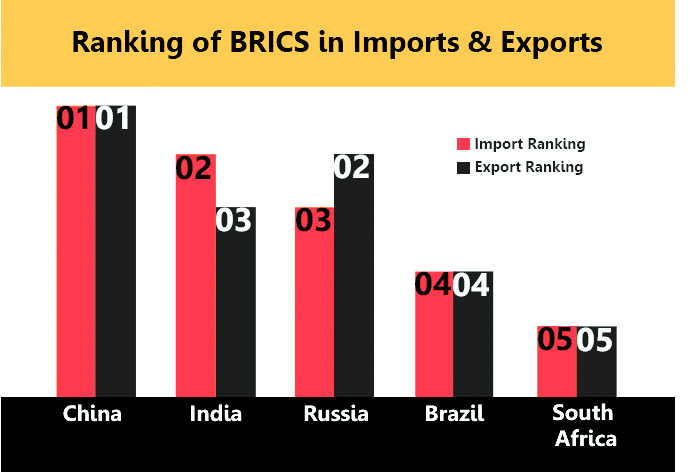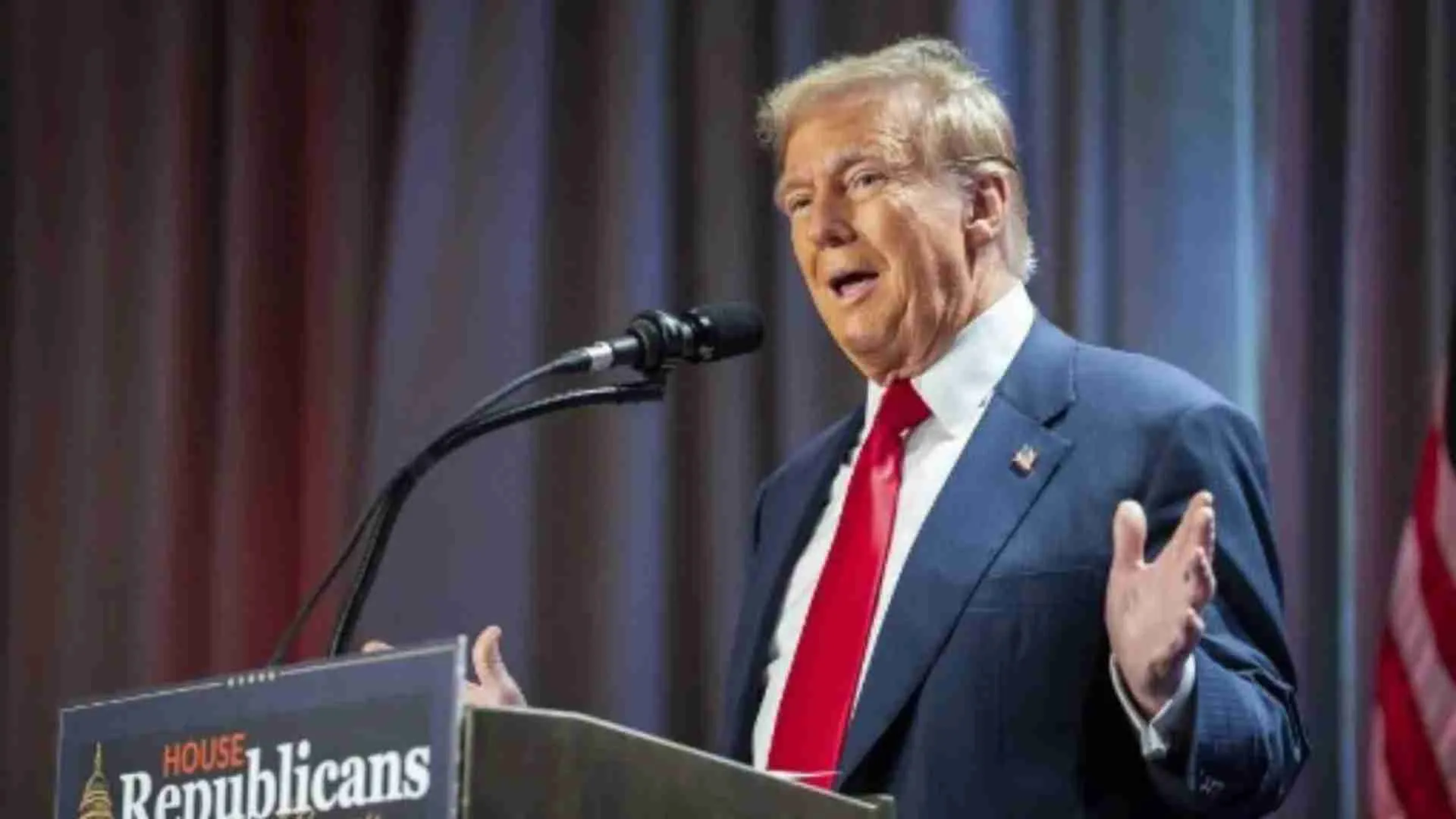The BRICS have also provided alternatives to existing global mechanisms deemed to be heavily influenced by the collective West and their policies. The BRICS New Development Bank (NDB), established as a partial alternative to the World Bank, has approved over 90 projects worth US$32 billion to support members’ infrastructure.
Economic cooperation was also discussed at the 14th BRICS summit in June 2022. Paying attention to providing a better interfacing in handling global crises, forming a multipolar economic strategy, developing alternative commercial and financial routes, promoting economic recovery, diversifying the economy, minimizing costs, developing electronic commerce, integrating markets, and cooperating with other nations have made BRICS attractive to smaller and other emerging countries.
Practically, BRICS is seen as a union of strong emerging powers with a common currency reserve of about US4 trillion, which has already undertaken achievements in standing against unilateralism and can be useful when positioned as alternatives to Western controlled institutions such as the World Bank, the International Monetary Fund, and Western financial and trade policies in general.
BRICS 2023 is an important turning point in the BRICS development and its future global role. BRICS combined efforts are seen in cooperation and collaboration in developing alternative payment systems to SWIFT, the gradual development of a non-dollar financial system, the development of a common payment system (BRICS Pay), the increase of trade using respective domestic currencies, and creating a common currency.
These are all progressing at different timescales, however the use of respective digital currencies in the settlement of future intra-BRICS trade will be a significant move. Russia, China, and India are all poised to launch their digital currencies for common usage by early 2025. This will allow trade to be conducted between them without the global SWIFT network and to reduce threats of the same upon other countries. Brazil and South Africa are close behind. In comparison, the United States and European Union, with rather more complex financial markets, have only recently agreed their digital currency protocols – a technical step the majority of BRICS members completed three years ago.
Strengthening the role of the New Development Bank (NDB) will help achieve BRICS national interests. The West’s approach to isolate Russia has created more incentives within the BRICS to increase trade with domestic currencies or create a common currency.
India in BRICS
The Indian economy experienced solid economic growth, recovering from the COVID-19 crisis, with increases of 7.2 percent GDP in the 2022-23 fiscal year. Over the past decade, India’s policies have taken many initiatives to strengthen the economy, rapid economic growth, and exports.
India’s nominal GDP as of June 2023 is projected to be about US$3.75 trillion marking a significant growth rate of 16.1 percent. New Delhi’s attention to the service sector, implementing reforms, increasing industrial production and their exports, appropriate foreign policy, focusing on the information technology (IT) sector, increasing consumption, private investment, taking advantage of existing resources, increasing foreign exchange reserves, increasing investments in the sector, private sector, the continued flow of foreign direct investment and appropriate economic growth. India is now the fifth largest economy in the world.
The construction of industrial infrastructure in India and economic development, while a lack of complete dependence on a specific industry is such that industry, agriculture, services, and the financial sector are important economic and commercial sectors. Over the last decade, India has almost doubled its GDP per capita and can use BRICS as a platform to leverage its global influence.
New Delhi has made strides in signing free trade agreements (FTAs) with its trading partners and has taken several measures to promote trade, including plans for a digital platform and open access to BRICS.
India and intra-BRICS trade
India recorded over US$100 billion in intra-BRICS trade in 2022 and it has traded with all members. BRICS allows India to resolve mutual differences and use it to strengthen relations with Africa and South America.
India-Russia
Russia has rapidly moved from 25th to 7th position among India’s trading partners over the past two years. Between April 2022 and February 2023, bilateral trade reached a record US$45 billion. Almost a third of this volume was mineral products (including ore and fuel). In turn, India exported goods worth US$4.43 billion to the Russian Federation in 2021.These are mainly chemical products, machinery, equipment and vehicles, food products and agricultural raw materials. This trade can be expected to grow given the mutually desirable commodity items the two possess, in addition to improving trade routes shortly to become available via the INSTC.
Prognosis: Rapidly growing trade based on energy, however non-oil trade is also increasing. As Indian and Russian traders and consumers adapt, and supply chains such as the INSTC come online, the bilateral trade development between these two BRICS members is highly promising.
India-China
Bilateral trade between India and China touched an all-time high of US$135.98 billion in 2022, while New Delhi’s trade deficit with Beijing crossed the US$100 billion mark for the first time. Despite frosty political relations, bilateral trade is currently steady. The main products that China exported are computers, smart phones, and semiconductors, while India exported iron ore, refined petroleum, and raw aluminium.
Prognosis: Currently stable and showing signs of growth; but remains vulnerable due to political rivalry and disputed territorial security issues. If these can be resolved – and both leaders expressed exactly this desire during August 2023 – trade development could become dynamic if infrastructure connectivity can be improved.
India-Brazil
India is now the 5th largest trading partner of Brazil, with India exporting US$9.72 billion of products during 2022, a significant increase over 2021’s US$6.77 billion. Brazil exported US$6.34 billion to India during 2022, an increase from US$$4.9 billion in 2021.
India-South Africa
In 2022, bilateral trade reached just under US$20 billion, in a well-balanced trade relationship with a small increase over 2021. The main products that South Africa exported to India are gold, coal briquettes, and raw copper. The main products that India exports to South Africa are refined petroleum, autos, and special purpose ships.
India plus
India is cautious about BRICS expansion. India’s role in the neighbouring SAARC trade organisation is a central part of its foreign policy, while India considers sub-regional cooperation to promote economic growth, social progress, cultural development, and security in South Asia. That said, India can use the strength and power of BRICS expansion to develop a strategy for regional cooperation within SAARC.
The SAARC trade network includes India as well as Afghanistan, Bangladesh, Bhutan, Maldives, Nepal, Pakistan, and Sri-Lanka. India dominates and makes sure multifactional trade does so on its own terms, resulting in a bloc that has been hindered in terms of its true potential. SAARC’s overall GDP is worth about US$4.47 trillion. Nevertheless, SAARC does have its uses and international investors interested in the India market can access SAARC nations under certain conditions if invested there.
India is also a member of BIMSTEC, a similar trade entity that includes Bhutan, Bangladesh, Myanmar, Thailand, Nepal, and Sri Lanka. It also tends to suffer from too much Indian love; however, opportunities exist. Routes east to ASEAN via Myanmar and Thailand may show future promise, as India also has a Free Trade Agreement with ASEAN.
The BRICS vision ahead
BRICS is facing many challenges, such as internal differences, global economic growth slowdown, geopolitical tensions, coordination problems, disagreements and different priorities of members, along with external pressures.
Economic cooperation within BRICS is still limited, and its cohesion is not especially strong, meaning we can expect an increase in institutionalising the various BRICS initiatives during this summit. There are also likely to discussions concerning BRICS trade liberalization and reducing each other’s import tariffs.























